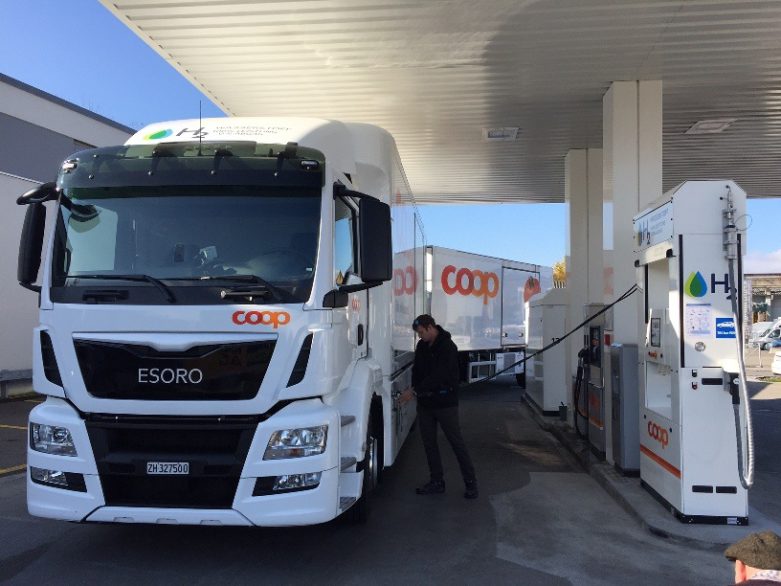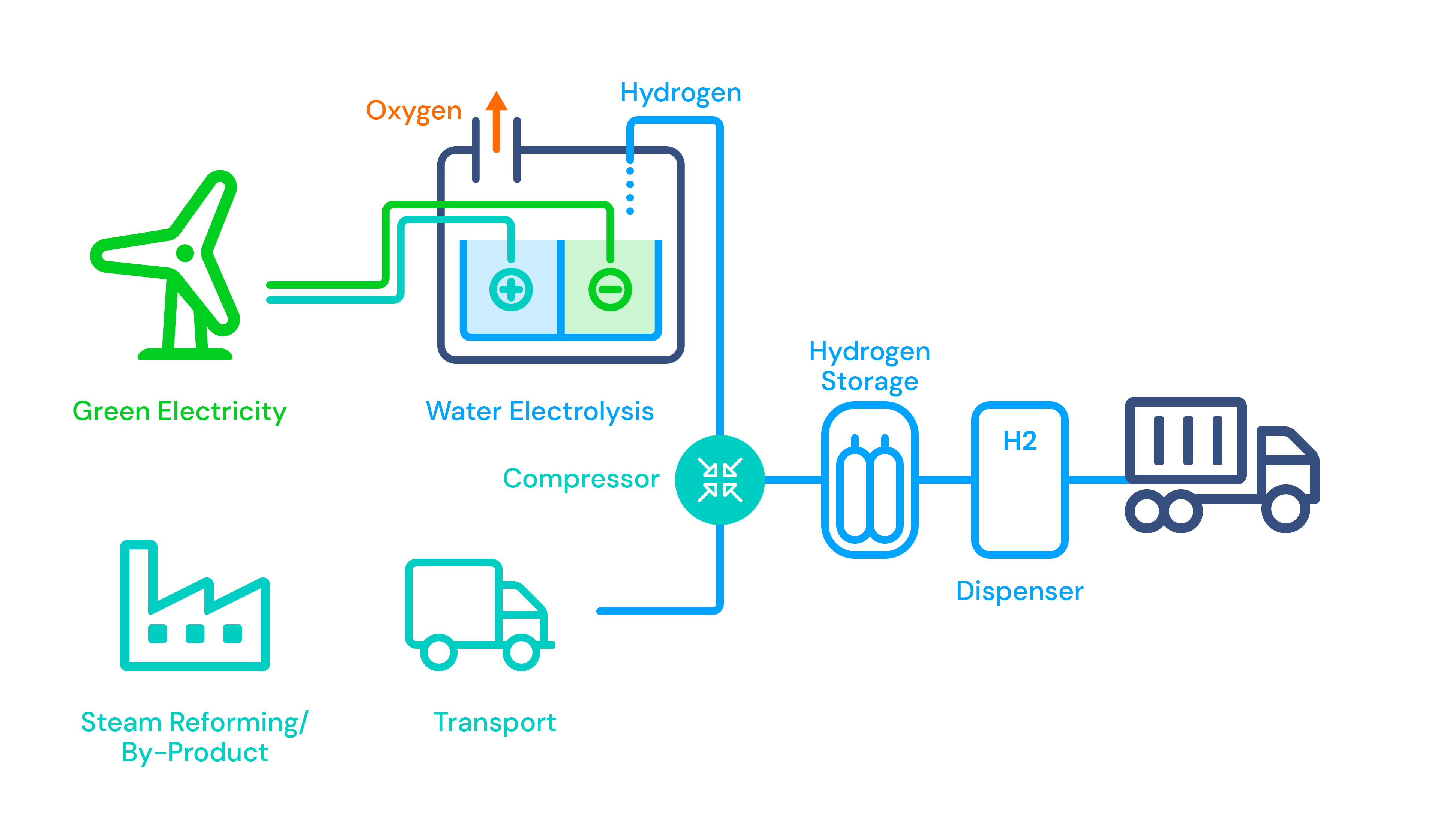How does a hydrogen refuelling station work?

Hydrogen refuelling stations operate at 350 bar for buses and at 700 bar for passenger cars. In the H2Haul project, 350 and 700 bar stations will be used to refuel the trucks. Hydrogen refuelling stations typically comprise gas storage, compression, and dispensing equipment to refuel vehicles according to internationally agreed protocols. Hydrogen can be produced at the HRS or delivered to the station.

Source: CHIC final publication
Hydrogen is the fuel of the future. Therefore, it is worth taking a look at how hydrogen gets into a fuel cell truck and onto the road.
- Hydrogen usually arrives at a refuelling station in the same way as petrol: in a truck. But unlike petrol, it can also be generated on-site by separating the element from water or natural gas. Hydrogen can also be transported through pipes or supplied as a by-product of industrial processes.
- If the hydrogen comes in liquid form, it must first be converted into gas before it can be used. It passes through vaporising towers that heat the liquid until it is converted into gas,
- Before hydrogen enters a vehicle, it must be compressed to high pressures.
- Hydrogen is found in storage tanks, just like petrol. The main difference is that the hydrogen tanks are on the ground. Any leak in a storage tank means that the hydrogen, which is lighter than air, is vented before it has a chance to burn.
- To prevent expansion and maintain energy density while pumping at high pressures, hydrogen must be cooled through a heat exchanger before it passes through a pump. Cooling prevents the vehicle’s on-board tanks from overheating, which speeds up refuelling.
There are different ways to produce hydrogen that have different levels of carbon intensity:
- Hydrogen produced from natural gas (Steam Methane Reforming – SMR).
Low-carbon and renewable hydrogen production pathways are the following:
– Low-carbon hydrogen:
- Hydrogen produced from natural gas: SMR with Carbon Capture Utilisation or Storage (CCUS), provided that upstream emissions are sufficiently low, that CO2 capture is applied to all the associated CO2 streams, and that the CO2 is prevented from reaching the atmosphere.
- Hydrogen produced from low-carbon electricity (e.g. nuclear)
– Renewable hydrogen: Hydrogen produced from the electrolysis of water – a process that uses renewable sources (e.g. wind, solar, hydropower) to produce hydrogen from water and electricity.
‘By-product’ hydrogen, meaning hydrogen that comes from facilities and processes designed primarily to produce something else (e.g. chemical industry) is another way to use hydrogen.
Below is the example of renewable hydrogen production in Switzerland, using hydropower as an electricity source. Hydrogen is then generated by electrolysis and transport in tube trailers to the hydrogen refuelling station.
